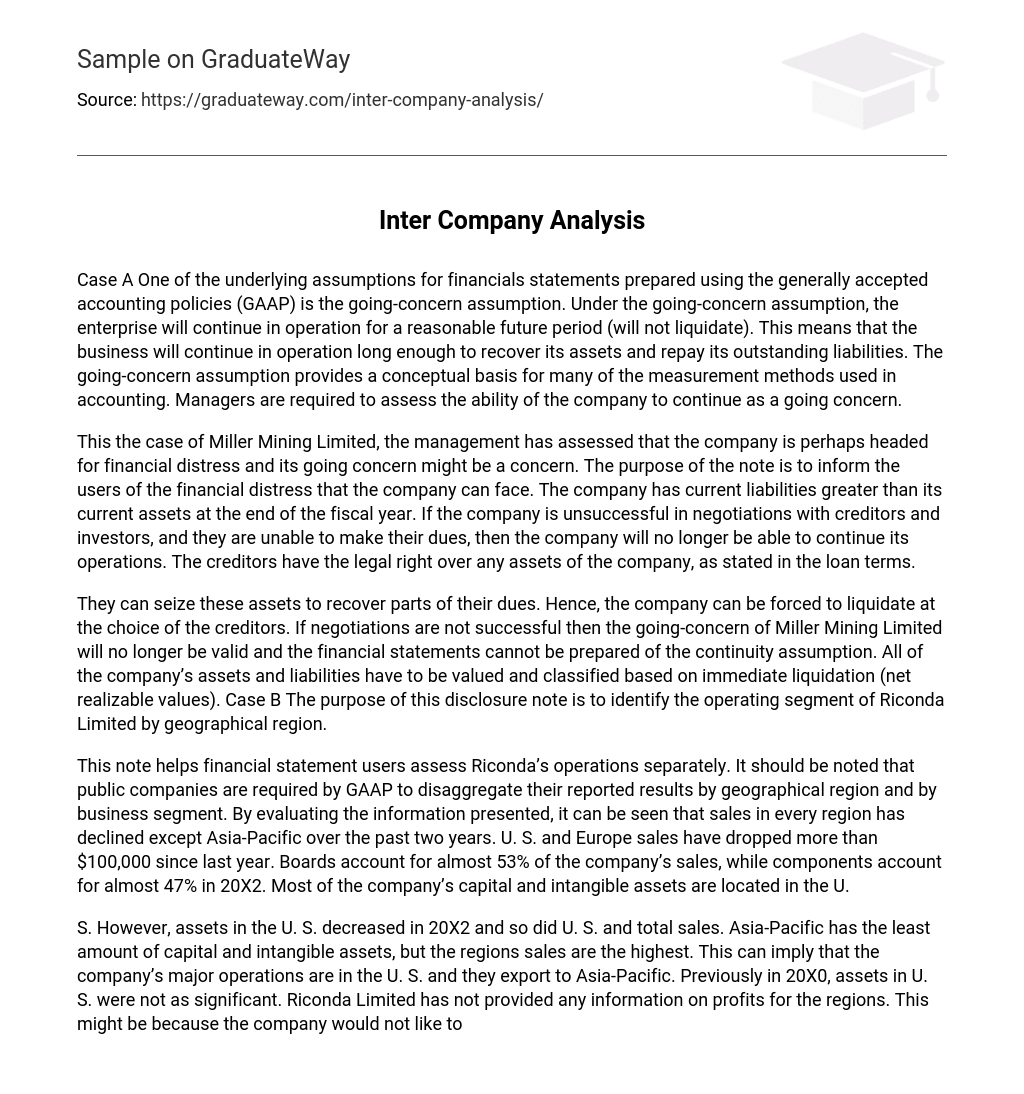Case A One of the underlying assumptions for financials statements prepared using the generally accepted accounting policies (GAAP) is the going-concern assumption. Under the going-concern assumption, the enterprise will continue in operation for a reasonable future period (will not liquidate). This means that the business will continue in operation long enough to recover its assets and repay its outstanding liabilities. The going-concern assumption provides a conceptual basis for many of the measurement methods used in accounting. Managers are required to assess the ability of the company to continue as a going concern.
This the case of Miller Mining Limited, the management has assessed that the company is perhaps headed for financial distress and its going concern might be a concern. The purpose of the note is to inform the users of the financial distress that the company can face. The company has current liabilities greater than its current assets at the end of the fiscal year. If the company is unsuccessful in negotiations with creditors and investors, and they are unable to make their dues, then the company will no longer be able to continue its operations. The creditors have the legal right over any assets of the company, as stated in the loan terms.
They can seize these assets to recover parts of their dues. Hence, the company can be forced to liquidate at the choice of the creditors. If negotiations are not successful then the going-concern of Miller Mining Limited will no longer be valid and the financial statements cannot be prepared of the continuity assumption. All of the company’s assets and liabilities have to be valued and classified based on immediate liquidation (net realizable values). Case B The purpose of this disclosure note is to identify the operating segment of Riconda Limited by geographical region.
This note helps financial statement users assess Riconda’s operations separately. It should be noted that public companies are required by GAAP to disaggregate their reported results by geographical region and by business segment. By evaluating the information presented, it can be seen that sales in every region has declined except Asia-Pacific over the past two years. U. S. and Europe sales have dropped more than $100,000 since last year. Boards account for almost 53% of the company’s sales, while components account for almost 47% in 20X2. Most of the company’s capital and intangible assets are located in the U.
S. However, assets in the U. S. decreased in 20X2 and so did U. S. and total sales. Asia-Pacific has the least amount of capital and intangible assets, but the regions sales are the highest. This can imply that the company’s major operations are in the U. S. and they export to Asia-Pacific. Previously in 20X0, assets in U. S. were not as significant. Riconda Limited has not provided any information on profits for the regions. This might be because the company would not like to disclose the profitability of each geographic segment or the management’s objective would be minimum compliance.
More importantly, the disclosure note is from 31 December 20X4 but it does not provide any information on 20X3. Additionally, the company did not disclose how the product sales (i. e. component sales) were distributed geographically. Case C The purpose of this disclosure note is in two fold: (1) it tells the users of the financial statements about related party transactions between the parent and its subsidiary and (2) it informs the users that the company is economically dependent on one buyer. The note also informs the users of the nature of the relationship, a description of the transaction, any amount used and its terms and conditions.
The note states that the transactions occur in the normal course of business and therefore they are recorded at the exchange value, which is negotiated by and agreed to by both parties. One would conclude that the sales information on the company’s income statement is not fair value, as it is a negotiated amount. Fair market value can be determined by looking at firms in the same industry. These firms will be selling the same product in the market. This price will be the fair market value that can serve as an estimate of the fair market value of Limpid’s products.





